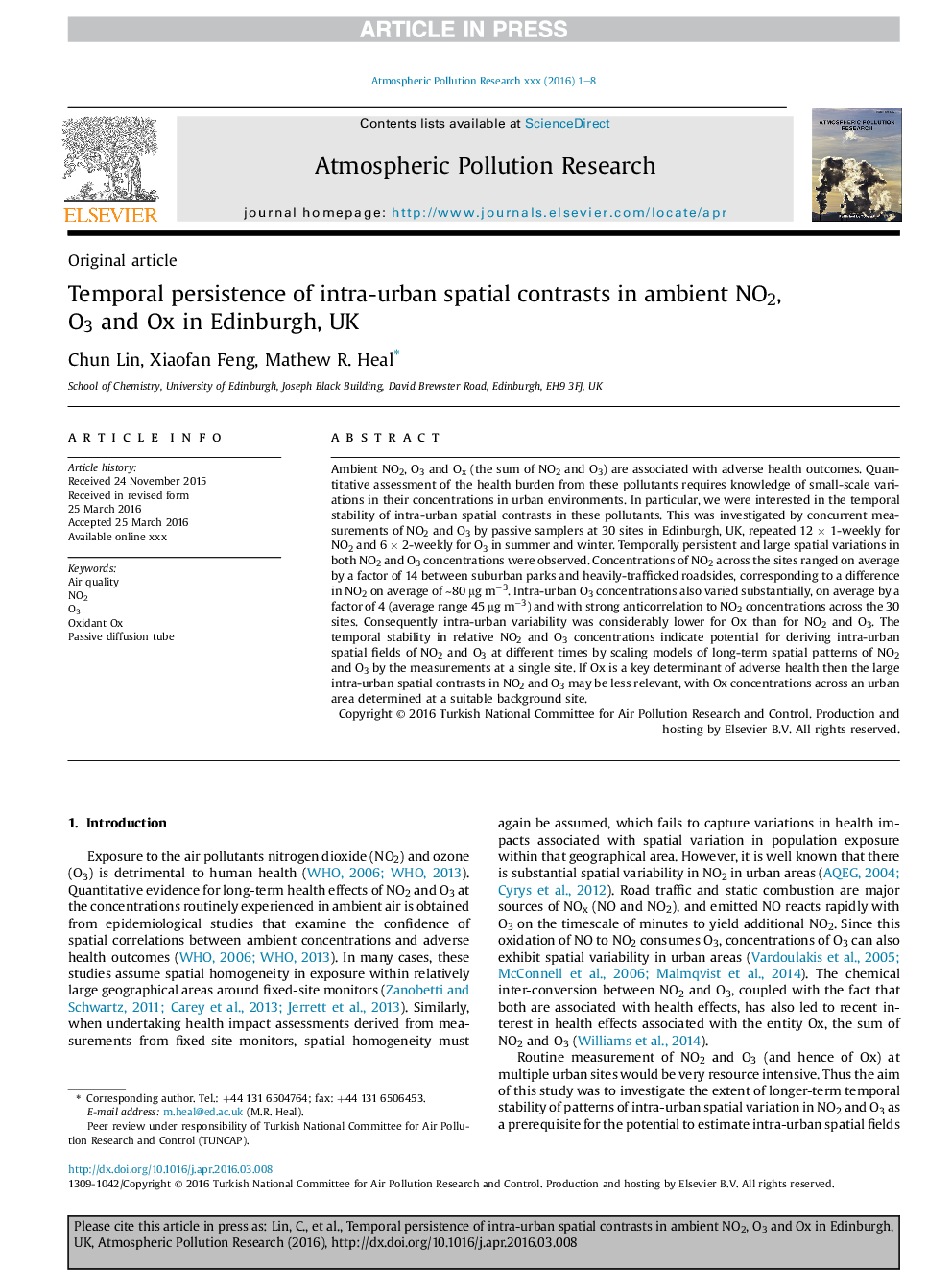| Article ID | Journal | Published Year | Pages | File Type |
|---|---|---|---|---|
| 10179864 | Atmospheric Pollution Research | 2016 | 8 Pages |
Abstract
Ambient NO2, O3 and Ox (the sum of NO2 and O3) are associated with adverse health outcomes. Quantitative assessment of the health burden from these pollutants requires knowledge of small-scale variations in their concentrations in urban environments. In particular, we were interested in the temporal stability of intra-urban spatial contrasts in these pollutants. This was investigated by concurrent measurements of NO2 and O3 by passive samplers at 30 sites in Edinburgh, UK, repeated 12 Ã 1-weekly for NO2 and 6 Ã 2-weekly for O3 in summer and winter. Temporally persistent and large spatial variations in both NO2 and O3 concentrations were observed. Concentrations of NO2 across the sites ranged on average by a factor of 14 between suburban parks and heavily-trafficked roadsides, corresponding to a difference in NO2 on average of â¼80 μg mâ3. Intra-urban O3 concentrations also varied substantially, on average by a factor of 4 (average range 45 μg mâ3) and with strong anticorrelation to NO2 concentrations across the 30 sites. Consequently intra-urban variability was considerably lower for Ox than for NO2 and O3. The temporal stability in relative NO2 and O3 concentrations indicate potential for deriving intra-urban spatial fields of NO2 and O3 at different times by scaling models of long-term spatial patterns of NO2 and O3 by the measurements at a single site. If Ox is a key determinant of adverse health then the large intra-urban spatial contrasts in NO2 and O3 may be less relevant, with Ox concentrations across an urban area determined at a suitable background site.
Keywords
Related Topics
Physical Sciences and Engineering
Earth and Planetary Sciences
Atmospheric Science
Authors
Chun Lin, Xiaofan Feng, Mathew R. Heal,
